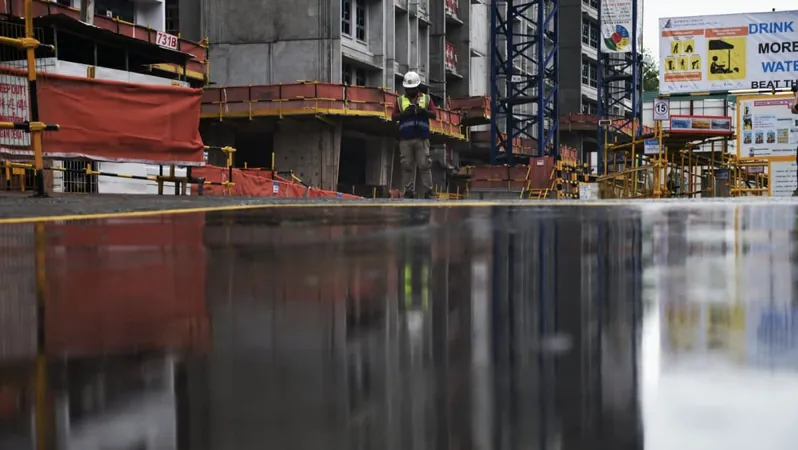
Employers Equipped with New Weather Safety Guidelines to Combat the Effects of Climate Change
2025-04-04
Author: Wei Ling
Overview
In a significant move to enhance workplace safety, Singapore's Ministry of Manpower (MOM) and the Workplace Safety and Health (WSH) Council have unveiled new guidelines aimed at helping employers navigate the challenges posed by adverse weather conditions. Released on April 4, 2025, these guidelines address the increasing unpredictability of weather patterns due to climate change, targeting strong winds, heavy rain, lightning, heatwaves, and haze.
Urgency of New Guidelines
The urgency for these guidelines stems from a troubling increase in weather-related workplace fatalities. Over the past five years, three deaths linked to severe weather events were reported. This included a tragic incident in July 2024, where a worker died after being struck by lightning while installing antennas on a rooftop. Such incidents underline the necessity for comprehensive safety measures, particularly in the construction sector, which accounted for a significant portion of the 43 workplace fatalities recorded last year.
Mandate and Compliance
While adherence to these new guidelines is not mandatory, employers are still bound by the Workplace Safety and Health Act to maintain safe working environments. This includes obligations to protect outdoor workers from heat stress, particularly significant as warmer temperatures become more prevalent.
Employer Recommendations
Employers are encouraged to develop tailored response plans, assessing risks pertinent to their specific operations. The guidelines detail various strategies, from securing structures during strong winds to ensuring worker safety during extreme rainfall and heat. For instance, during thunderstorms, outdoor work should cease immediately, and workers need to seek shelter in secure buildings rather than isolated locations like trees or lamp posts.
Communication and Training
To further bolster safety measures, employers are recommended to maintain robust communication channels with contractors and subscribe to alerts regarding severe weather phenomena. Training for workers on recognizing and reacting to adverse conditions is also emphasized. This aspect is critical, as workers need to understand that their safety takes precedence, and they must be prepared to stop work and seek shelter when warned of hazardous weather.
Government's Stance
Mr. Zaqy Mohamad, Senior Minister of State for Manpower, expressed the importance of these guidelines in creating safer working conditions and stressed the need for proper risk assessment and awareness among workers. He urged understanding from property developers when adverse weather may necessitate adjustments to construction schedules.
Conclusion
In conclusion, as Singapore faces the ramifications of climate change, these newly introduced workplace safety guidelines are a vital step toward protecting the health and safety of workers. Employers are called upon to not only comply with these guidelines but to foster a culture of safety that responds to the evolving challenges of our changing environment.

 Brasil (PT)
Brasil (PT)
 Canada (EN)
Canada (EN)
 Chile (ES)
Chile (ES)
 Česko (CS)
Česko (CS)
 대한민국 (KO)
대한민국 (KO)
 España (ES)
España (ES)
 France (FR)
France (FR)
 Hong Kong (EN)
Hong Kong (EN)
 Italia (IT)
Italia (IT)
 日本 (JA)
日本 (JA)
 Magyarország (HU)
Magyarország (HU)
 Norge (NO)
Norge (NO)
 Polska (PL)
Polska (PL)
 Schweiz (DE)
Schweiz (DE)
 Singapore (EN)
Singapore (EN)
 Sverige (SV)
Sverige (SV)
 Suomi (FI)
Suomi (FI)
 Türkiye (TR)
Türkiye (TR)
 الإمارات العربية المتحدة (AR)
الإمارات العربية المتحدة (AR)